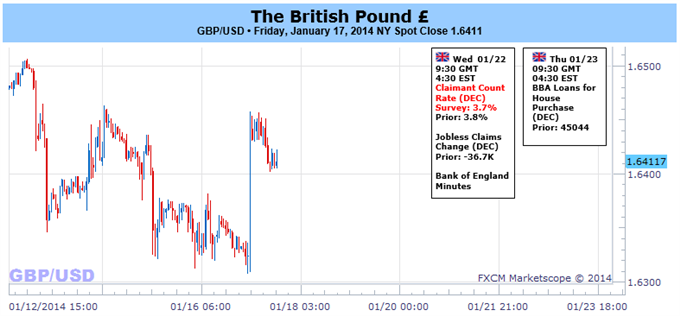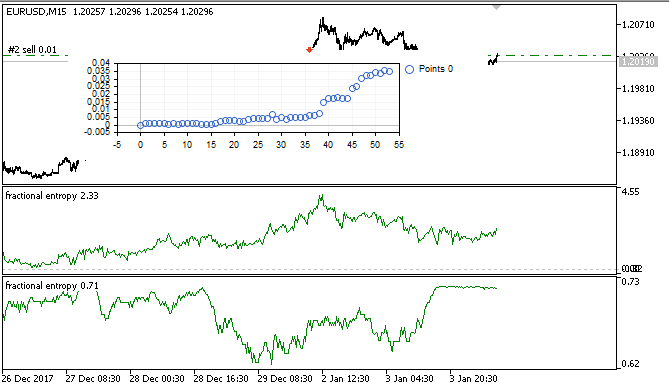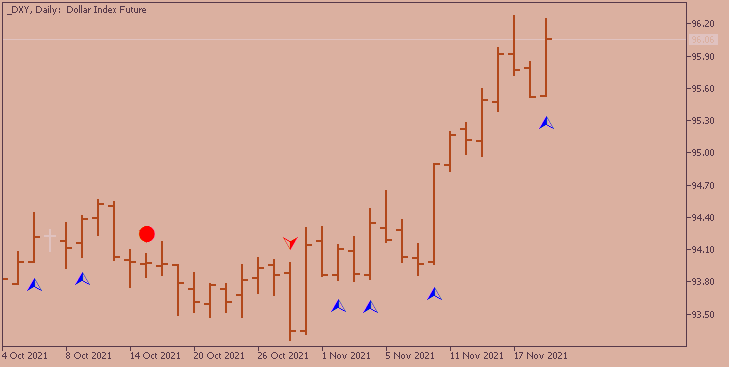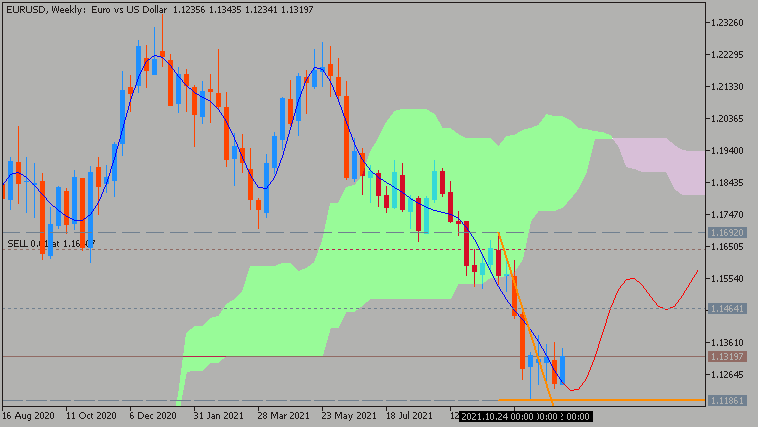Forex Fundamentals : January 20 - 24
The dollar rose to two month highs against the euro on Friday as U.S. data reinforced the view that the economic recovery is gaining enough traction for the Federal Reserve to continue tapering stimulus measures.
U.S. industrial production rose 0.3% in December, data on Friday showed, rising for the fifth successive month.
A separate report showed that U.S. housing starts fell 9.8% last month, more than the 8.3% decline forecast by analysts. U.S. building permits rose less-than-expected in December, but remained close to November’s five year highs.
EUR/USD fell to 1.3517, the lowest level since November 25 and was last down 0.58% to 1.3539. For the week, the pair lost 0.94%.
Sentiment on the euro was hit by concerns that the subdued inflation outlook may prompt the European Central Bank to ease monetary policy in order to safeguard the fragile recovery in the region.
The dollar was little changed against the yen. USD/JPY fell to session lows of 104.20, and was last down just 0.02% to 104.31. For the week, the pair gained 1.17%.
USD/CHF rose as high as 0.9120, the highest since January 9 and settled at 0.9100, 0.60% higher for the day, and extending the week’s gains to 1.20%.
Elsewhere, the pound moved higher against the dollar on Friday after data showed that U.K. retail sales rose 2.6% in December from a month earlier, the fastest rate of increase in nine years. Analysts had expected retail sales growth of just 0.4%.
GBP/USD rose to highs of 1.6310, the strongest since January 14 and was last up 0.42% to 1.6420. For the week, the pair rose 0.20%.
Australia’s dollar ended the week at three-and-a-half year lows against the greenback after dire employment data on Thursday was seen as increasing the likelihood that the Reserve Bank will cut interest rates to bolster the economy. AUD/USD hit lows of 0.8764 on Friday, the weakest since July 2010 and was last down 0.465 to 0.8779. For the week, the pair tumbled 2.96%.
New Zealand’s dollar was sharply lower against the greenback on Friday, with NZD/USD dropping 1.17% to 0.8251 at the close, extending the week’s losses to 1.41%.
The Canadian dollar also ended the week sharply lower against the greenback, with USD/CAD settling at 1.0961, not far from the four year high of 1.0990 struck on Wednesday.
The loonie was pressured lower by expectations that the Bank of Canada will stick to its dovish stance on rates at its upcoming policy meeting after a recent series of weak economic data sparked doubts over the economic outlook.
In the week ahead, investors will be awaiting monetary policy decisions by the Bank of Japan and the BoC. China is to release data on fourth quarter growth as well as a closely watched report on manufacturing activity. The euro zone is to produce preliminary data on manufacturing and service sector activity, while the U.K. is to publish data on the unemployment rate.
Ahead of the coming week, Investing.com has compiled a list of these and other significant events likely to affect the markets.
Monday, January 20
China is to release data on fourth quarter gross domestic product, the broadest indicator of economic activity and the leading indicator of economic growth. The country is also to produce data on fixed asset investment, industrial production and retail sales.
Germany is to produce data on producer price inflation, while the Bundesbank is to publish its monthly report.
Markets in the U.S. are to remain closed for the Martin Luther King Day holiday.
New Zealand is to release data on consumer price inflation, which accounts for the majority of overall inflation.
Tuesday, January 21
The ZEW Institute is to release its closely watched report on German economic sentiment, a leading indicator of economic health.
The U.K. is to publish a private sector report on industrial order expectations.
Canada is to produce data on wholesale sales and manufacturing sales.
Wednesday, January 22
Australia is to publish data on consumer price inflation and a private sector report on consumer sentiment.
The BoJ is to announce its benchmark interest rate and publish its monetary policy statement, which outlines economic conditions and the factors affecting the bank’s decision. The announcement is to be followed by a press conference.
The U.K. is to release official data on the change in the number of people unemployed and the unemployment rate, as well as data on average earnings and public sector borrowing. Meanwhile, the Bank of England is to publish the minutes of its most recent policy setting meeting.
The ZEW Institute is to publish a report on economic expectations in Switzerland, a leading indicator of economic health.
The BoC is to announce its benchmark interest rate and publish its rate statement and monetary policy report. The announcement is to be followed by a press conference.
New Zealand is to release private sector data on manufacturing activity.
Thursday, January 23
China is to release the preliminary estimate of the HSBC manufacturing index, a leading indicator of economic health.
The euro zone is to release preliminary data on manufacturing and service sector activity, a leading indicator of economic health. Germany and France are also to release individual reports.
Canada is to produce data on retail sales, the government measure of consumer spending, which accounts for the majority of overall economic activity.
The U.S. is release the weekly report on initial jobless claims and a private sector report on existing home sales.
Friday, January 24
Canada is to round up the week with data on consumer price inflation.


 2Likes
2Likes LinkBack URL
LinkBack URL About LinkBacks
About LinkBacks










 Reply With Quote
Reply With Quote







Bookmarks